The Children’s House
“So, from the age of three till six, being able now to tackle their environment deliberately and consciously, they begin a period of real constructiveness.”
Dr. Maria Montessori, The Absorbent Mind
-
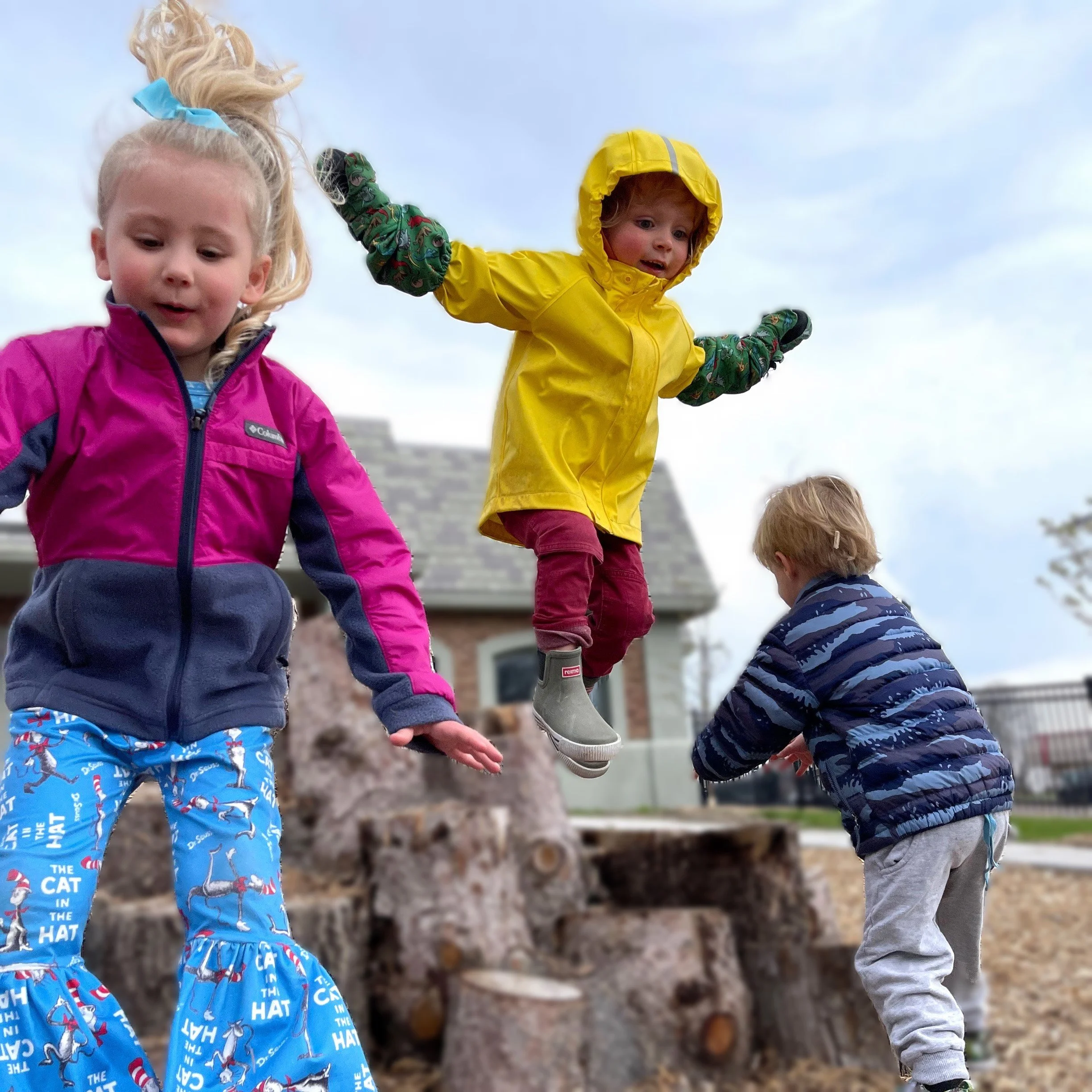
The purpose
The Children’s House offers children the means to develop intellectually, physically, socially, emotionally, and artistically. Dr. Montessori said it well in The San Remo Lectures: “It is through appropriate work and activities that the character of the child is transformed.” When children are free to explore their interests, they bloom and their true personality emerges. Children derive joy and deep satisfaction from being capable.
-

The environment
The Children’s House consists of an indoor environment, an outdoor environment, a children’s bathroom, and a nap room. The spaces have been custom built to allow children the greatest possible degree of independence. The indoor learning environment is furnished with materials for exploring the work of practical life, sensorial refinement, language, mathematics, music, art, geography, and science.
-
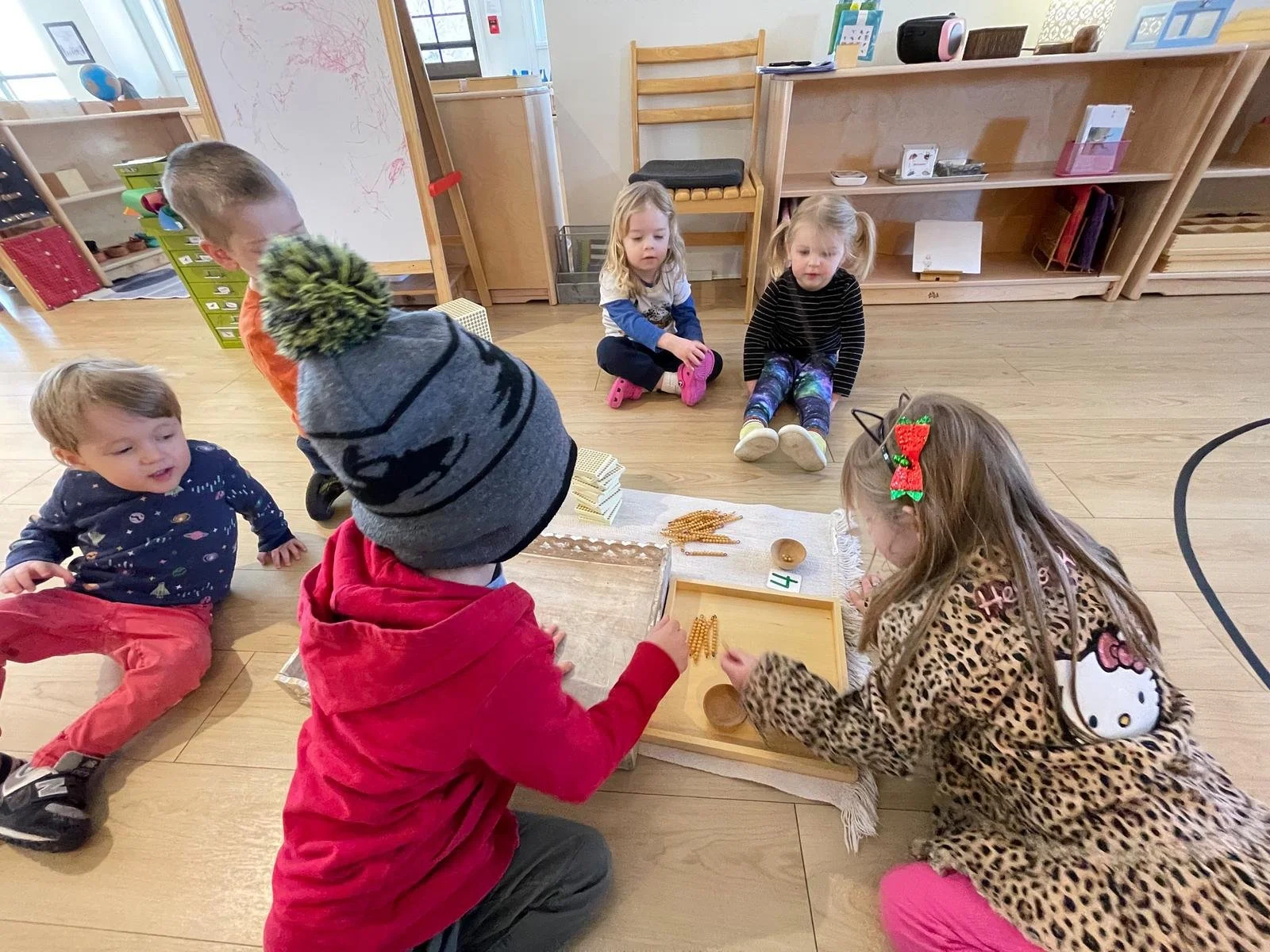
The numbers
The Children’s House is a three- or four-year program, leading to first grade. The environment is DHS-licensed for 30 children. Children may join the Children’s House by transitioning from the Toddler Community at around the age of 33 months, or by enrolling from the greater community.
What can children learn between the ages of 33 months and 6 years?
-
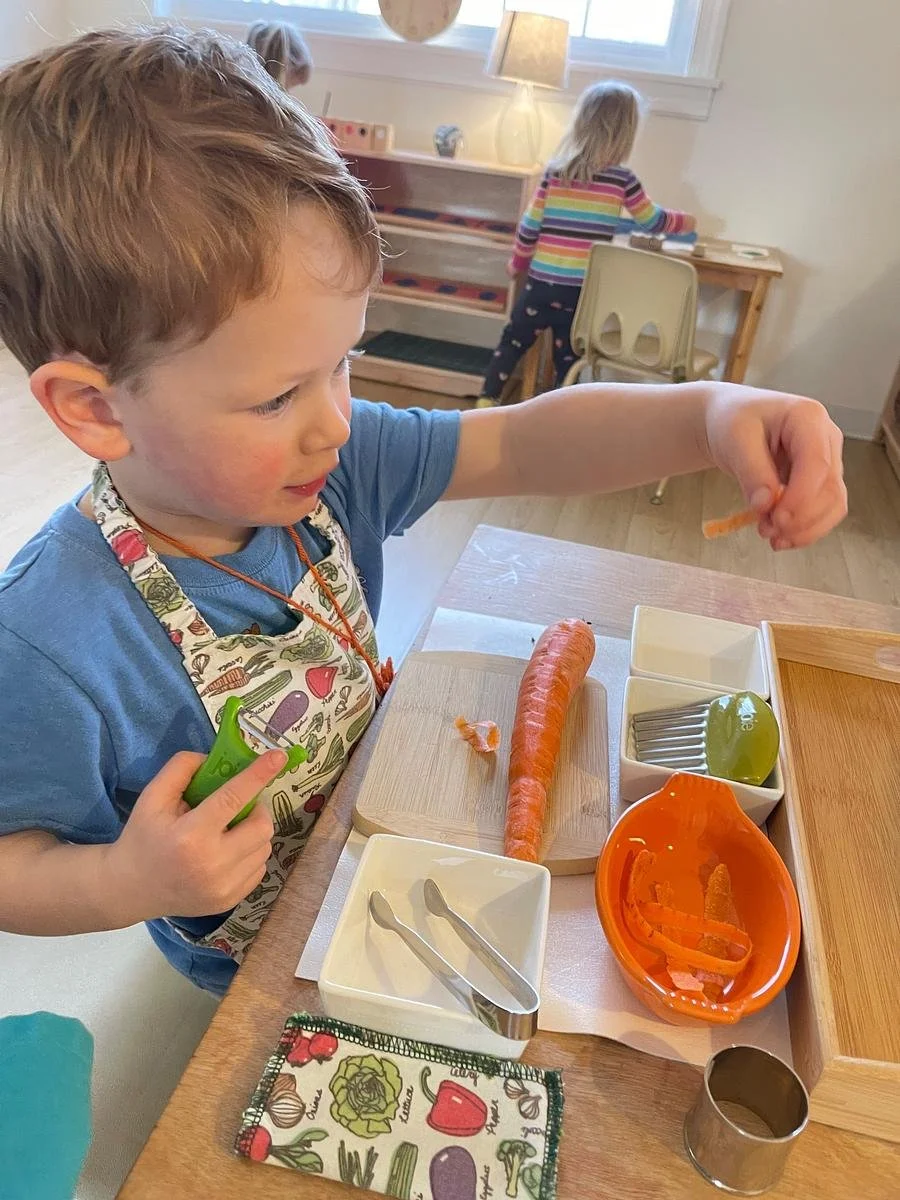
Practical Life Skills
The exercises of practical life are one of the more revolutionary aspects of the Montessori Method. Through simple, repeatable activities, children prepare for the work of real life: caring for themselves, caring for their environment, and caring for their relationships. Practical life activities resonate with children because they have seen the adults in their lives do these tasks. Works such as hand washing, table scrubbing, food preparation, plant care, sewing, polishing works, and sweeping refine children’s fine and gross motor skills, encourage independence, and cultivate concentration. Practical life exercises instill a lasting love of work.
-
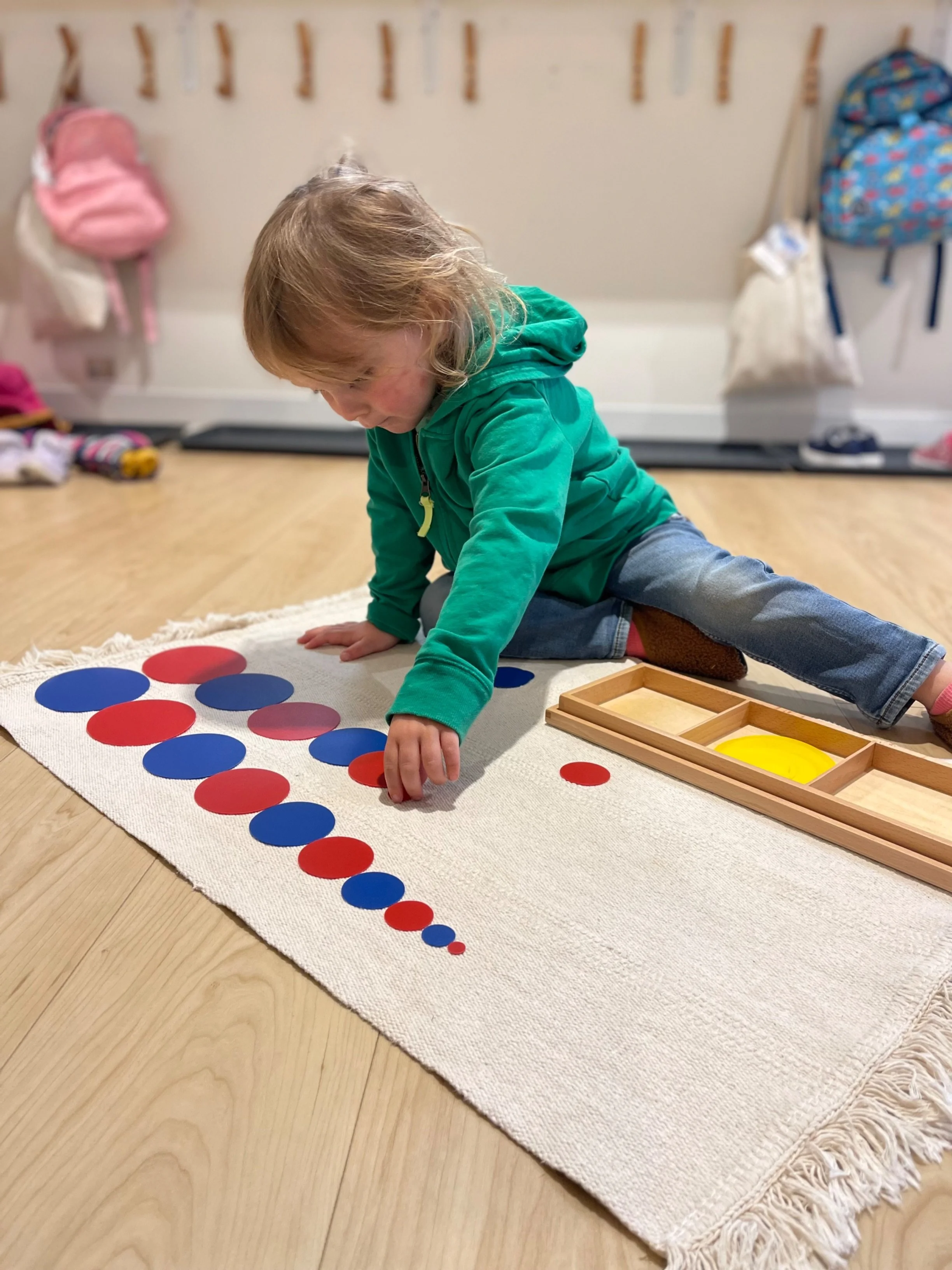
Sensorial Refinement
A progression of sensorial materials allows children to refine their senses. Using the materials, children explore size, shape, color, form, texture, temperature, weight, smell, taste, volume, and pitch. Throughout these experiences, children acquire vocabulary to express the characteristics they perceive. Children work with blocks, geometric shapes, and quantities of ten to begin the indirect development of their mathematical minds. The sensorial exercises also provide opportunities for large muscle movement.
-

Language
Language development is supported by adults’ use of clear, precise language, activities to build vocabulary and encourage a love of language, and activities that promote writing and reading. Conversation, storytelling, poems, and songs encourage practice with new vocabulary. Over the three years a child spends in Children’s House, writing begins with tactile experiences and phonetic pronunciations of letter sounds and progresses to symbolic expression, from writing individual letters, to words, to phrases, and ultimately, to sentences. Reading is introduced after a foundation in writing has been established. Children begin with labeling activities using context clues and move on to more advanced reading activities as they develop confidence and knowledge in this area.
-

Mathematics
Montessori mathematics education begins with quantities and symbols for the numbers one through ten. Children progress to using concrete representations of units, tens, hundreds, and thousands to understand the decimal system and to work with the four basic arithmetic operations. Through games and focused practice, children memorize basic math facts, which will help them do increasingly complex calculations. The mathematics sequence in the Children’s House culminates with fractions: equivalencies and the four basic arithmetic operations.
-

Geography
Knowledge of geography and different cultures is supported in the sensorial area specifically and is also represented throughout the environment with art, music, foods, and materials from around the world. Children work with puzzle maps of the world, the seven continents, and their own country. The children learn the flags of the world and often choose to design their own flags. In the Language area of the room, Cultural Folders, Art Folders, Land and Water Form Folders, and Biome Folders provide pictures of and information about other continents, countries, climates, and cultures.
-
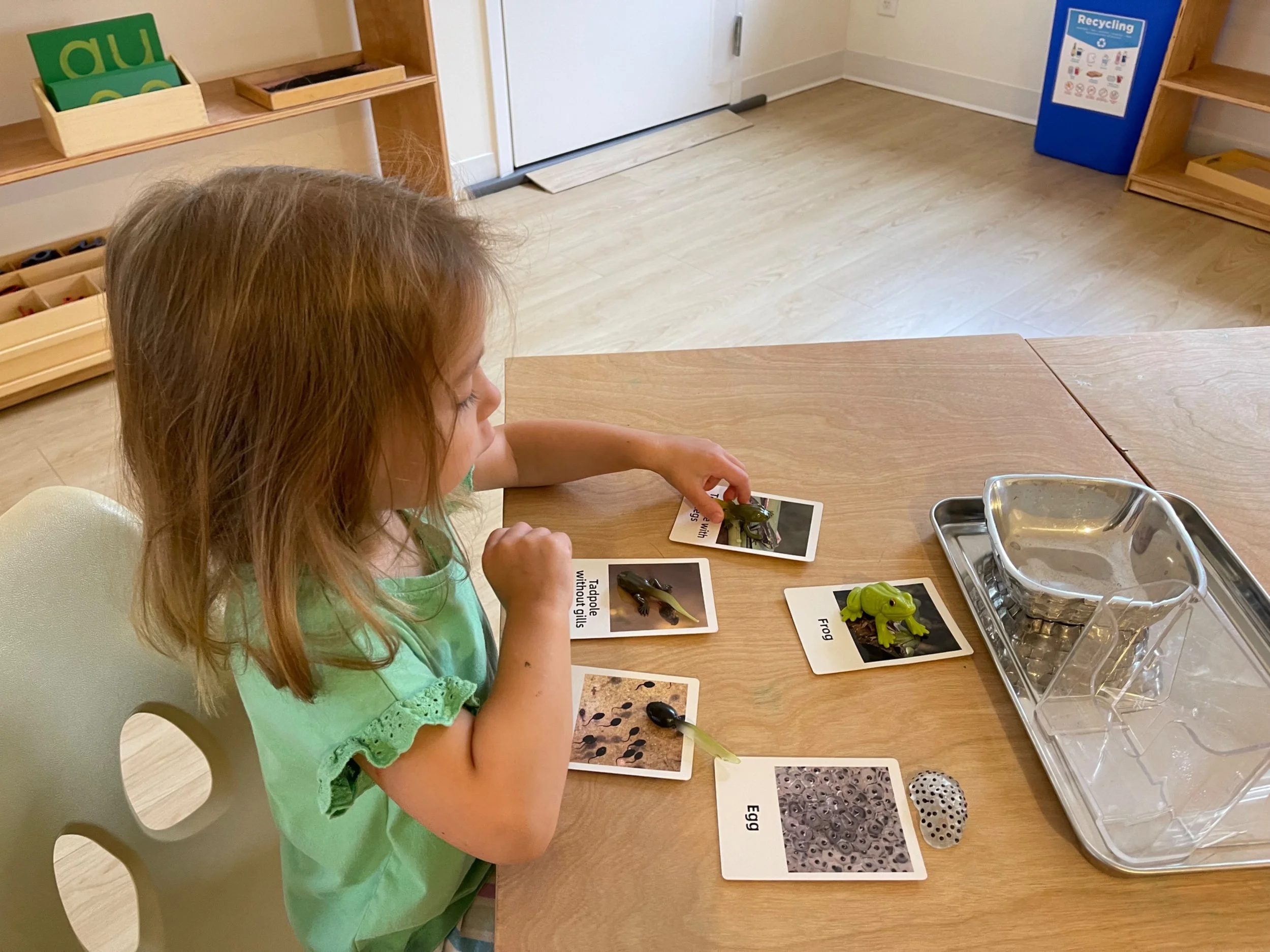
Life Science
Children explore science through materials in the Language area of the room, as well as in the laboratory of the great outdoors. In the indoor environment, they learn biological classifications; they study the life cycles of various animals; they learn the scientific names of plants and animals, and they even conduct simple experiments. Outdoors, they plant, tend, and harvest food; they observe the appearance and behavior of wildlife, such as insects, birds, squirrels, and rabbits; and they observe the characteristics of each season.
-
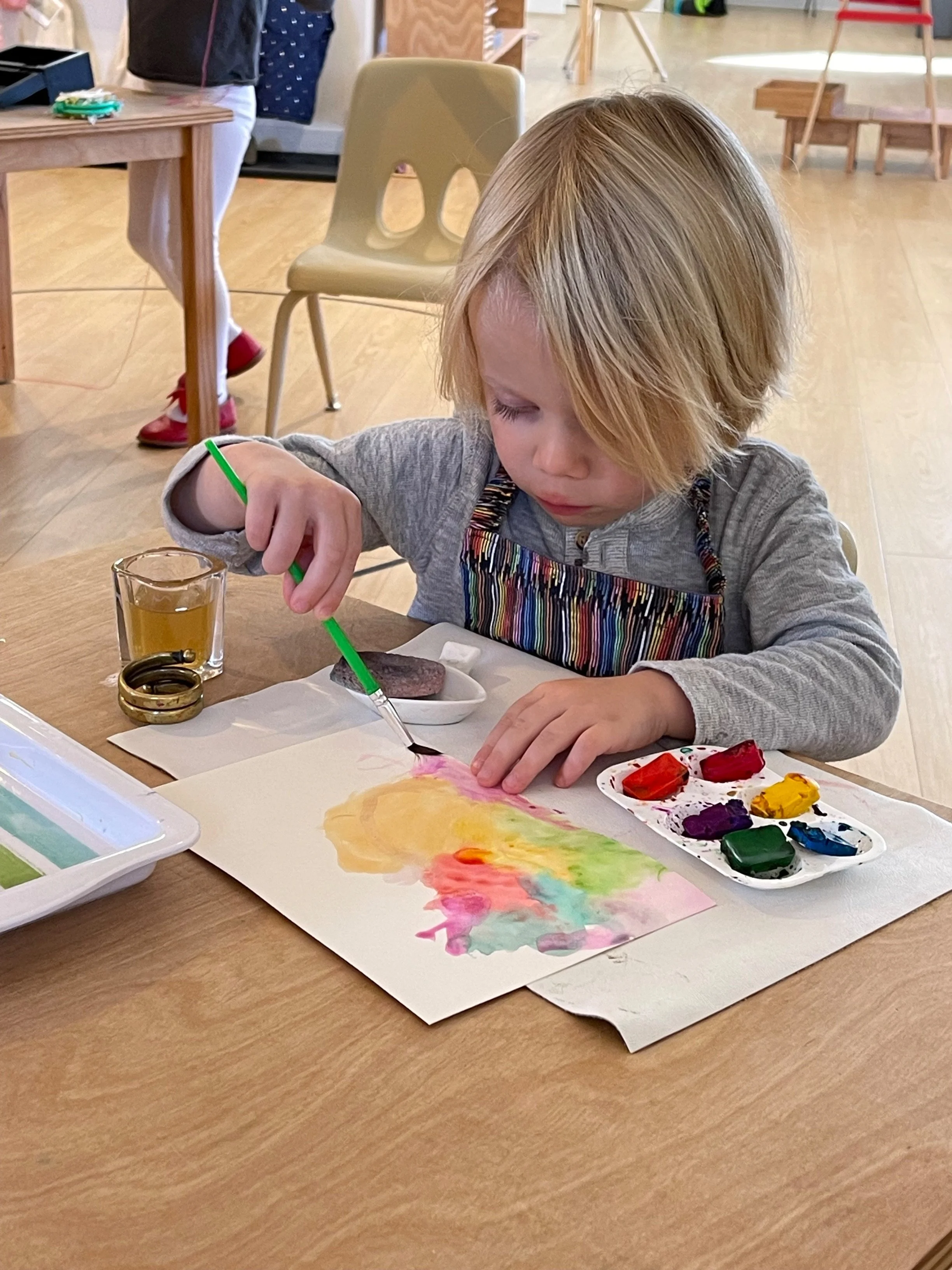
Artistic Expression
Art materials are available at all times. Whenever they wish, children may freely choose to explore and experiment. Children may express themselves artistically with clay, watercolor paints, colored pencils, origami, scissors, oil pastels and more. In addition to fostering creativity, art provides opportunities for young children to develop their fine motor skills and concentration.
-

Music
Children build and refine their senses of rhythm, volume, and pitch in the Children’s House. Materials include percussion instruments, sound cylinders, and the bells. Through practice with the bells, children become familiar with the diatonic scale. After plenty of experience playing the scale and learning songs, children begin to learn how to read and write music.
-

Social Skills
Social skills are developed throughout the day, through modeling, conversations, and formal Grace and Courtesy lessons, which teach the social practices common to our local community. Some of the skills children learn include how to introduce oneself or others, how to ask to observe someone working, how to walk around a working mat, how to give/receive a gift, how to have a conversation, and how to respect others’ concentration. Conflict resolution skills are developed using the 5-step process: cool down, identify the problem, brainstorm solutions, agree on a solution, follow up. The amount of adult mediation provided in these conflicts depends on the development of the children involved.
“In the eight months my daughter has been in this school, I have seen her grow so much, both academically and socially! Clover Montessori is absolutely amazing and has meant so much to our family!”
— Brittany S.
Visit Clover Montessori School!
Hours
Clover Montessori School is a five-day per week program with Full Day and Half Day options.
Half Day: 8:20 AM to 1:00 PM
Full Day: 8:20 AM to 3:30 PM
In addition, Clover offers extended hours.
Before Care: 7:15 AM to 8:20 AM
After Care: 3:30 PM to 4:30 PM
Extended Day: 4:30 PM to 5:30 PM


